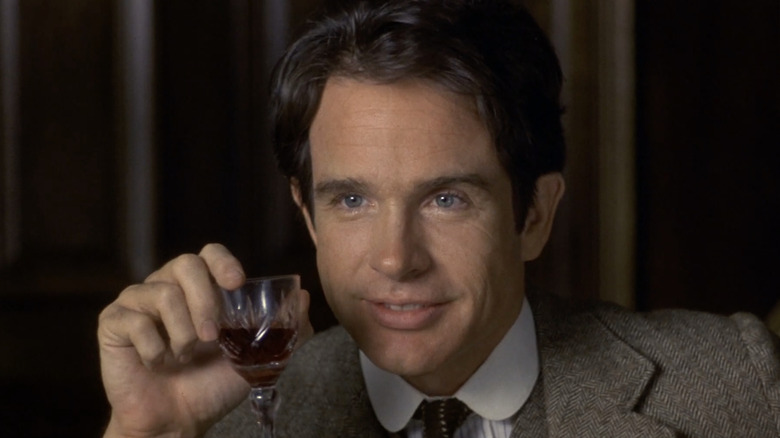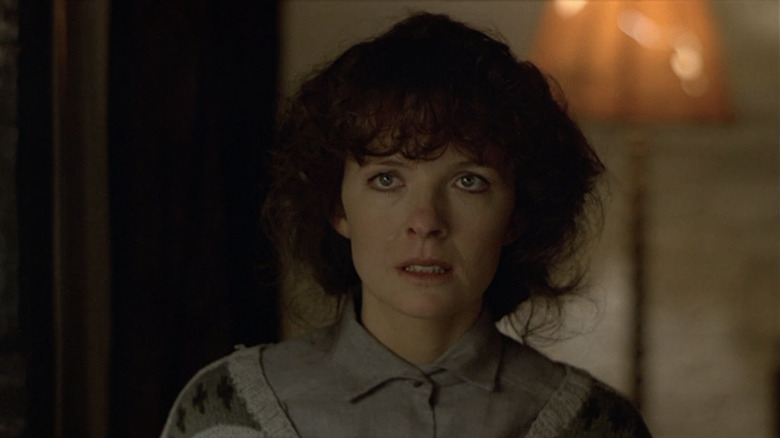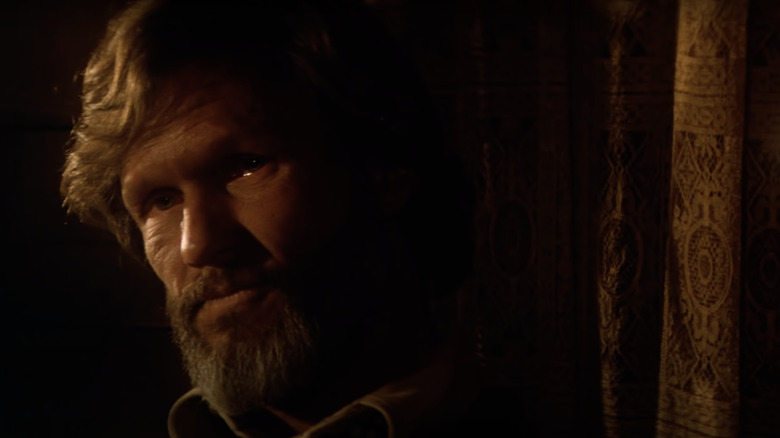The Warren Beatty Movie That Marked The End Of The Intermission Era
Sometimes a star burns so bright in Hollywood that they are just able to make whatever movie they want. Today, that basically does not exist at all, because studios do not want to spend a penny on something they aren't sure will earn a billion dollars at the box office. But before the studios bet on intellectual property, they bet on stars. The brands were the artists, and few stars burned brighter throughout the 1960s and '70s than Warren Beatty. The "Bonnie and Clyde" and "Shampoo" star managed to make every film he appeared in an event. He was sexy, charismatic, and knew exactly how to hold himself on screen.
In 1978, Beatty took his first stab behind the camera with "Heaven Can Wait," which he co-directed with actor and screenwriter Buck Henry. "Heaven Can Wait" earned nine Academy Award nominations and became the fifth-highest grossing film of the year. Not only had he proven his impact as an actor, but now he had behind-the-camera success to show how bulletproof he was.
So, for his sophomore feature, he went big. He made a three-hour-plus epic about communist activists John Reed (played by Beatty) and Louise Bryant (Diane Keaton). This was "Reds." While another tremendous awards success, earning a whopping 12 Oscar nominations (including a Best Director win for Beatty), the film was so expensive that the chance for profit was incredibly low. A number of factors led this to marking a sort of end to an era where Hollywood would take chances on these big name-driven passion projects.
Cutting the gross in half
While a lot of people complain about long running times because of the perception of a film not "earning" the length or just because they don't like holding their bladders, movie studios are also trepidatious of making movies north of three hours for financial reasons. In an interview with Entertainment Weekly back in 2006, Warren Beatty said:
"If you adjust for inflation, 'Reds' would cost about $91 million. And it's the last movie with an intermission — it could only play once a night, so immediately, your gross is halved."
"Reds" was already a 195-minute movie to begin with. Adding in a 10-15 minute intermission in the middle of it can bump it all the way up to three-and-a-half hours. This is all excluding the coming attraction trailers as well. There are only so many hours in a day, and there are even less that a cinema can be open. This is also prior to the multiplex era of moviegoing, it was one movie on one screen once a day, essentially.
Thanks to Beatty's star power, the film still took in a totally respectable $39 million at the box office, but because the film cost $33 million to make, it probably did not even break even after the costs for marketing and publicity.
A year after Heaven's Gate
Another massively important piece of context to this is that "Reds" came out just one year after Michael Cimino's "Heaven's Gate." This was another case of a studio seeing someone make a gigantic hit — in this case the Best Picture winner of 1978, "The Deer Hunter" — and they let Cimino just go absolutely hog wild making his next film, an epic bigger than the epic he had just made. "Heaven's Gate" cost $44 million and only made about $3.5 million at the box office, making it one of the biggest box office bombs of all time.
Obviously, "Reds" was nowhere near a calamity on that level. But it also was not an overwhelming financial success, either, and after that, access to a blank check became incredibly rare.
Now, studios need to be absolutely sure of what they have before they will greenlight something with a big budget, and they will also pump loads into the marketing as well. Beatty is very confused by this methodology, telling EW:
"The motion-picture business is convinced that to make a lot of money for its stockholders, the most lucrative approach is to make a movie that has a $50 million or $60 million marketing campaign and is in 3,000 theaters on opening night. Obviously, that requires content for people who want to be entertained, to escape. More power to that type of movie — except there are other movies that don't fulfill those requisites, that, done well, would require big budgets. We have to look at the unintended consequences of those massive campaigns."
Letting an artist be able to play on a gigantic canvas has produced some of cinema's most beloved works. It's also led to unmitigated disasters. You just will never know what they are capable of unless you give them that chance. Beatty, luckily, was able to do that, and he made a great film in "Reds." As we become more risk-averse, who knows how many times we will ever be able to see that kind of a swing ever again?


